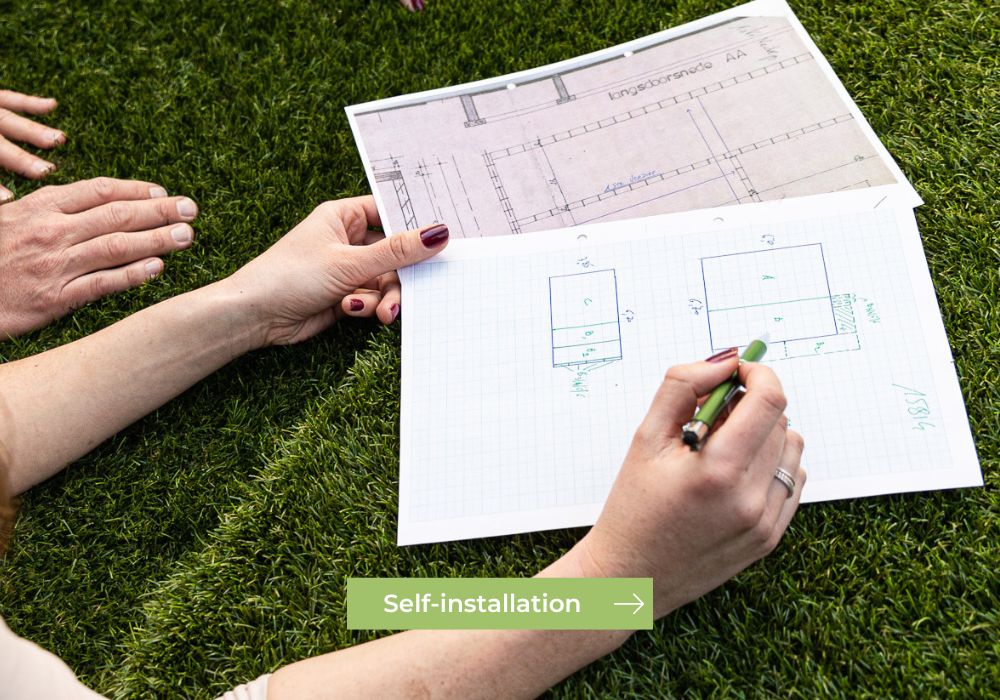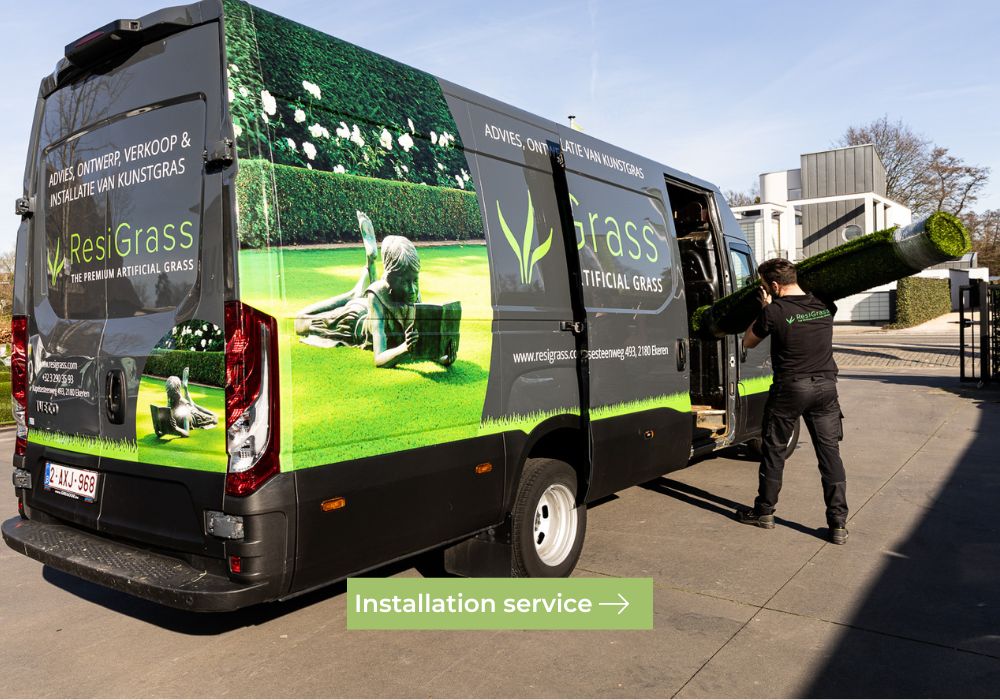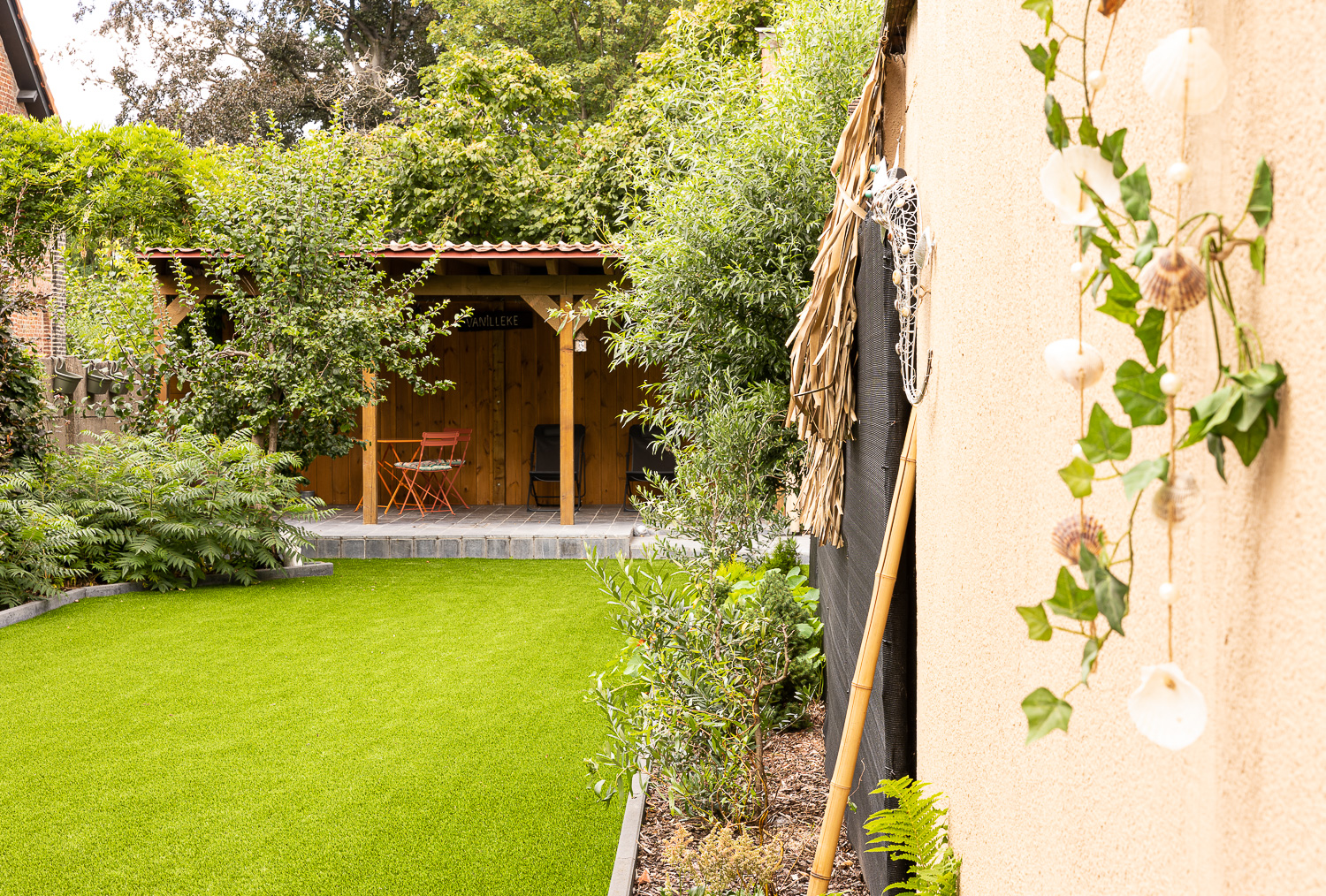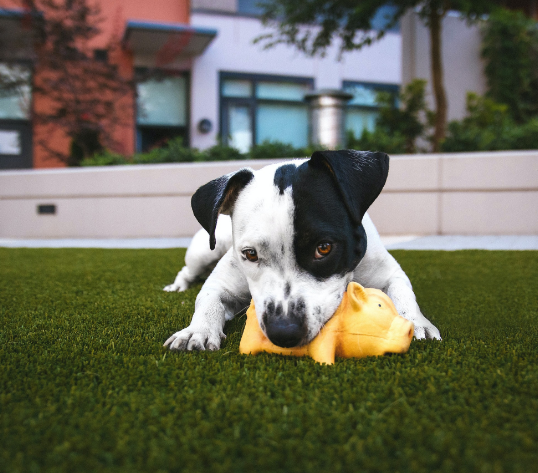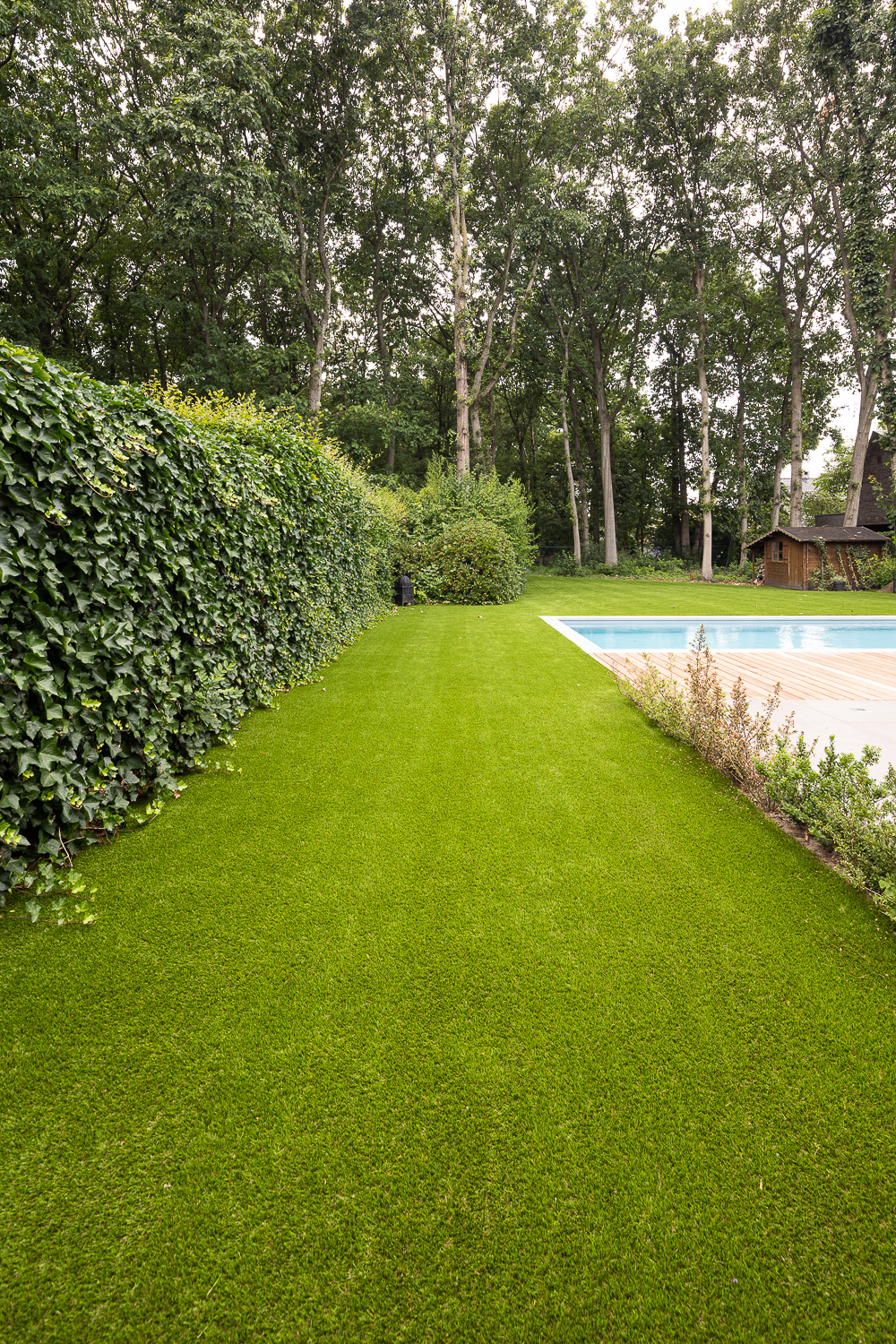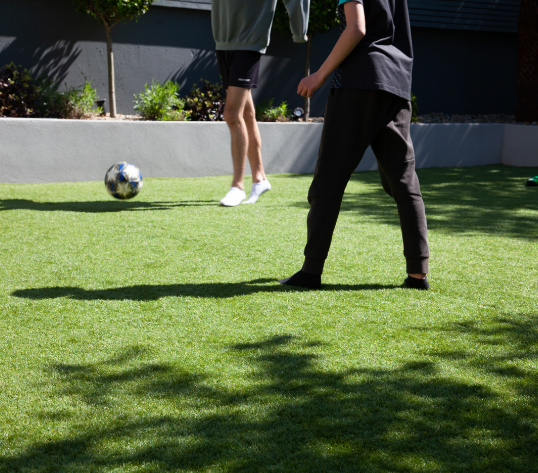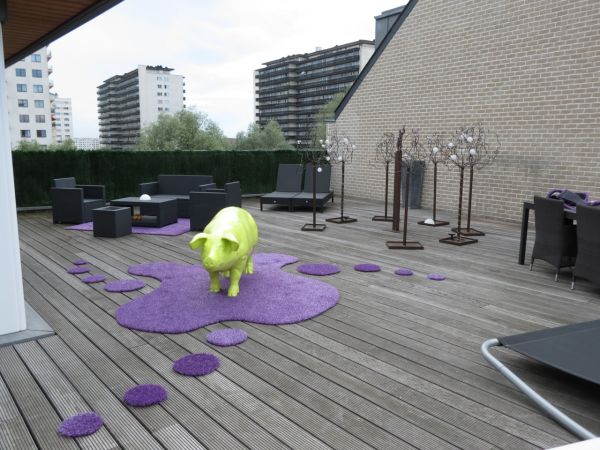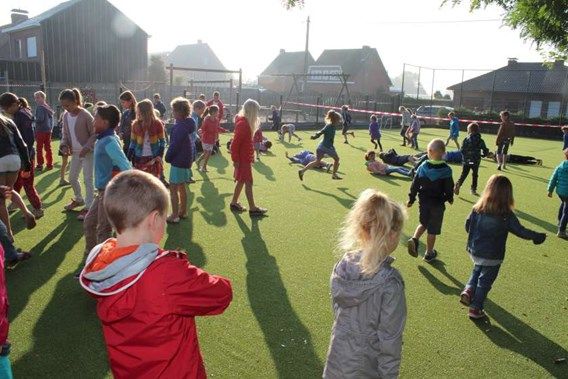Laying artificial grass
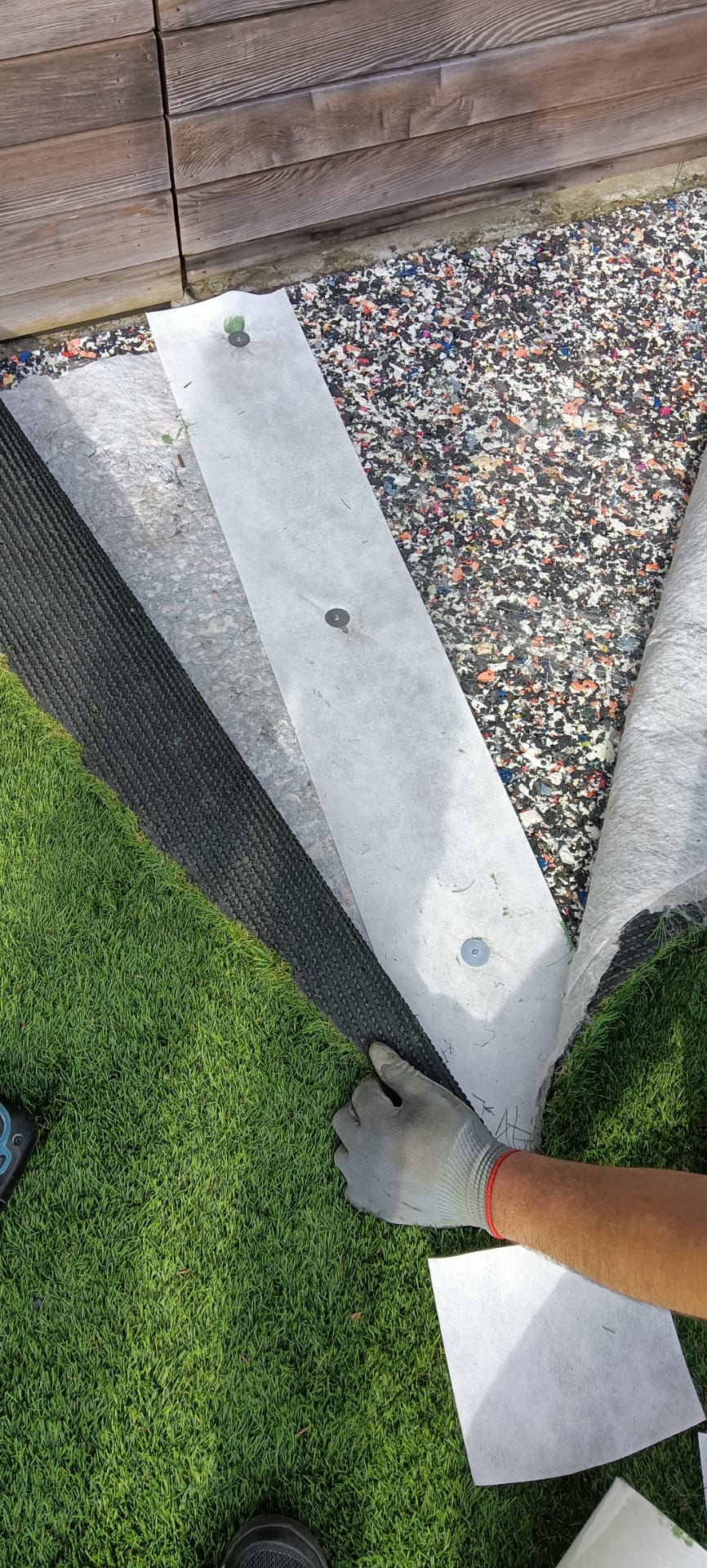
Why laying artificial grass
Artificial grass is barely distinguishable from real grass thanks to our natural-looking grass varieties. A Resigrass grass mat forms the basis for a low-maintenance garden or roof terrace that you will enjoy for years: a correct installation is the icing on the cake. Especially when your garden or the surface to lay the artificial grass on is larger than the standard roll width (4m) and seams are involved, a good approach can make or break the end result. A properly laid seam results in one large natural-looking grass surface.
When purchasing artificial lawn from Resigrass, you always have the choice of installing the artificial mat yourself, or having the artificial grass installed by our professional team.
Discover the benefits of Resigrass for your project
Different phases of laying artificial grass
Regardless of who does the work, the different phases of an artificial grass installation are relatively the same. Depending on the surface on which you install artificial grass, the existing soil is prepared first: in gardens, this means excavating existing grass and/or organic materials, in a (roof) terrace this means cleaning up the surface. Preparing the soil is a crucial phase because an artificial grass mat takes the shape of the subsoil, and it also prevents subsidence of the lawn.
Next, an intermediate layer is installed: this can be a sand bed and/or a shock-absorbing mat for a soft, levelling base. A geotextile on top of the sand bed provides pressure distribution and promotes water permeability, while repelling weed growth.
Finally, the artificial grass is installed with the tiers glued together if necessary and the perimeter securely fastened with artificial grass hooks or nails.

